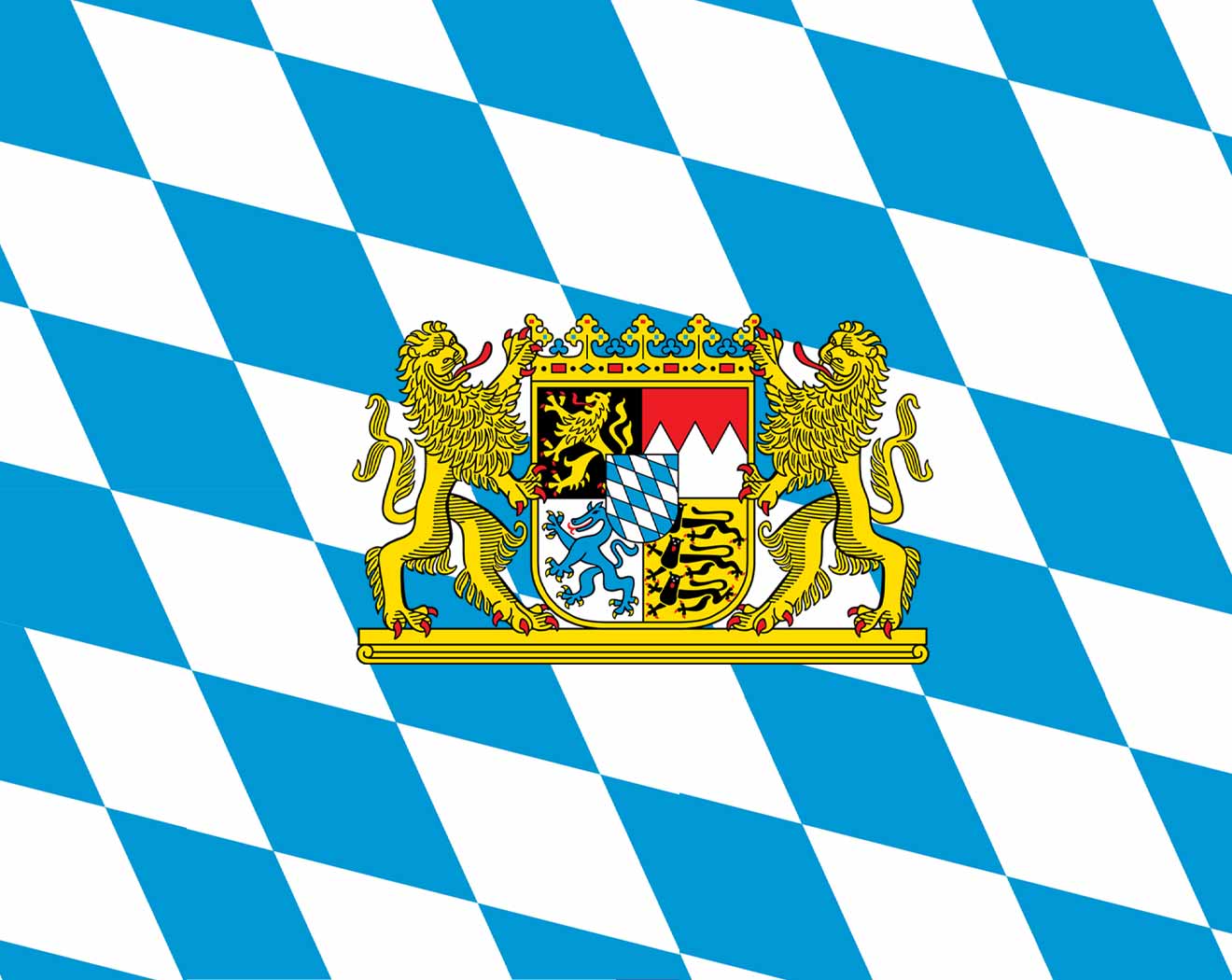
Deutsch-Chinesische Enzyklopädie, 德汉百科
 节假日
节假日

慕尼黑啤酒节(The Munich Oktoberfest)(又称“十月节”,Oktoberfest)每年九月末到十月初在德国的慕尼黑举行,持续两周,是慕尼黑一年中最盛大的活动。2002年大约有六百万人参加了啤酒节,许多其他城市也仿效慕尼黑举办“十月节”。 十月节是慕尼黑的一个传统的民间节日。因为在这个节日期间主要的饮料是啤酒,而且消耗量惊人,所以中国人喜欢把他们的这个节日简称为啤酒节。在联邦德国则叫十月节,从不叫啤酒节。 活动一共举行16天,到十月的第一个星期天为止,举行的地点是一个叫做"Theresienwiese"的地方,巴伐利亚方 言简称为"Wiesen"(意为牧场)。为了这个活动专门酿制的一种啤酒叫做Wiesenbier,注意不要和Märzen混淆,比一 般的啤酒颜色更深,酒劲儿也更大,上酒的时候用的是一种叫做“Maß;”的容量一升的大酒杯,现场搭建起容纳三千到一万人的大帐篷,只 有慕尼黑当地的酒商才被允许在里边提供这种酒。酒客们也消耗掉大量的食物,大多是传统的家常小吃如香肠、烤小鸡、泡菜和烤牛尾等。 每逢十月节开幕那天,要举行盛大的开幕式和由各大啤酒厂组织的五彩缤纷的游行。开幕式在一个临时搭起的大帐篷里由慕尼黑市市长主持。中午12时,在12响礼炮声和音乐声中,市长用一柄木槌把黄铜龙头敲进一个大啤酒桶内,然后拧开龙头,把啤酒放出来,盛在特制的大啤酒杯中。市长饮下这第一杯,著名的十月节便正式开始了。(Quelle:http://baike.baidu.com)
慕尼黑啤酒节(又称“十月节”,德语:Oktoberfest)每年九月末到十月初在德国的慕尼黑举行,持续两周(大概16天),是慕尼黑一年中最盛大的活动。2002年大约有六百万人参加了啤酒节,许多其他城市也效法慕尼黑举办“十月节”。
Das Oktoberfest in München (mundartlich d’Wiesn) ist das größte Volksfest der Welt.[1][2]
Es findet seit 1810 auf der Theresienwiese in der bayerischen Landeshauptstadt München statt. Veranstalter ist die Stadtverwaltung München (Referat für Arbeit und Wirtschaft).[3] Für das Oktoberfest brauen einige Münchner Brauereien ein spezielles Bier, das eine Stammwürze von mindestens 13,5 % aufweisen muss[4] und ca. 5,8 bis 6,4 Volumenprozent Alkohol enthält.[5] Das Oktoberfest generiert in den zwei Wochen jährlich durchschnittlich eine Milliarde Euro Umsatz.[6]
オクトーバーフェスト(独:Oktoberfest)は、ドイツ、バイエルン州の州都ミュンヘンで開催される世界最大規模の祭りである。1810年以来ミュンヘン市内中心部のテレージエンヴィーゼ(Theresienwiese テレーゼの緑地という意)と呼ばれる広大な場所で9月半ばから10月上旬に開催され、毎年約600万人の人が会場を訪れている。
会場名にちなんだヴィーゼ(緑地)のバイエルン語、ヴィーズン(Wiesn)という別称も頻繁に使われる。オクトーバーフェストに提供される特別のビールはフェストビアやヴィーゼンビア(Wiesenbier、緑地ビールの意)とも呼ばれ、5.8〜6.4%の高アルコール度で醸造されている。
Oktoberfest (German pronunciation: [ɔkˈtoːbɐˌfɛst]) is the world's largest Volksfest (beer festival and travelling funfair). Held annually in Munich, Bavaria, Germany, it is a 16- to 18-day folk festival running from mid or late September to the first weekend in October, with more than six million people from around the world attending the event every year. Locally, it is often called the Wiesn, after the colloquial name for the fairgrounds, Theresa's meadows (Theresienwiese). The Oktoberfest is an important part of Bavarian culture, having been held since the year 1810. Other cities across the world also hold Oktoberfest celebrations that are modeled after the original Munich event.
During the event, large quantities of Oktoberfest Beer are consumed: during the 16-day festival in 2013, for example, 7.7 million litres (66,000 US bbl) were served.[1] Visitors also enjoy numerous attractions, such as amusement rides, sidestalls, and games. There is also a wide variety of traditional foods available.
The Munich Oktoberfest originally took place in the 16-day period leading up to the first Sunday in October. In 1994, this longstanding schedule was modified in response to German reunification. As such, if the first Sunday in October falls on the 1st or the 2nd, then the festival would run until 3 October (German Unity Day). Thus, the festival now runs for 17 days when the first Sunday is 2 October and 18 days when it is 1 October. In 2010, the festival lasted until the first Monday in October (4 October), to mark the event's bicentennial.
L’Oktoberfest (« fête d'octobre » en allemand, souvent désignée par les Munichois par die Wiesn, en référence au site sur lequel elle a lieu, la Theresienwiese (cf. ci-après)) est une fête populaire connue dans les pays francophones sous le nom de fête de la bière, se déroulant à Munich en Allemagne. De nos jours, elle commence le premier samedi de la deuxième quinzaine de septembre à midi exactement, et se termine le premier dimanche d'octobre, sauf si celui-ci est le 1er ou le 2 octobre auquel cas la fête est prolongée jusqu'au 3. Elle dure donc de seize à dix-huit jours. L’Oktoberfest a lieu près du centre de Munich, sur un terrain vague de 42 hectares. Ce site s'appelle Theresienwiese (« prairie de Thérèse »), parfois raccourci en die Wiese (« la prairie »). Afin de préserver le caractère familial de la fête, une fête foraine et des lieux de restauration sont installés autour des tentes. L’Oktoberfest est la plus grande fête foraine au monde. On y trouve des attractions historiques mais aussi de très modernes.
L'Oktoberfest (lett. Festa d'ottobre, in bavarese Wiesn) è un festival popolare che si tiene ogni anno a Monaco di Baviera (München), in Germania, negli ultimi due fine settimana di settembre e il primo di ottobre. È l'evento più famoso ospitato in città, nonché la più grande fiera del mondo, con mediamente 6 milioni di visitatori ogni anno e che hanno raggiunto quasi i sette milioni nel 2011 con un consumo di 7,5 milioni di boccali di birra.[1] Altre città del mondo ospitano feste simili chiamate anch'esse Oktoberfest.
Presso l'area di Theresienwiese,[2] con 42 ettari di estensione, si prepara un grande luna park e si montano gli stand (Festzelte) dove sono servite le sei marche di birra storiche di Monaco di Baviera (Paulaner, Spaten, Hofbräu, Hacker-Pschorr, Augustiner e Löwenbräu) autorizzate a produrre la bevanda per l'occasione. Ognuno dei 14 stand più grandi è in grado di ospitare dalle 5 000 alle 10 000 persone; in ogni stand vi è un palco centrale sul quale si esibiscono gruppi musicali nel tradizionale stile schlager.
Oktoberfest —en alemán: fiesta de octubre— se celebra entre los meses de septiembre y octubre en la ciudad Bávara de Múnich desde 1810. Es la fiesta popular más grande de Alemania y una de las mayores del mundo, con visitas anuales medias superiores a los seis millones de visitantes.1 Tiene una duración de 16 a 18 días, comenzando el primer sábado después del 15 de septiembre. Se celebra en el campo conocido como Theresienwiese (Prado de Teresa), en las inmediaciones del centro de Múnich, cerca de la Estación Central (Hauptbahnhof).
Окто́берфест (Октябрьские народные гуляния, нем. Oktoberfest, среди мюнхенцев также известные под названием «Wiesn» (на баварском диалекте — «луг»)) — фольклорный фестиваль (нем. Volksfest), ежегодно проводимый в Мюнхене (Германия), самое большое народное гуляние в мире[1][2].
Октоберфест привлекает каждый год около 6 млн посетителей[2], приезжающих в Мюнхен со всех частей Баварии и Германии, а также из других стран. Праздник проводится — в начале октября на лугу Терезы (нем. Theresienwiese) — в центре Мюнхена, неподалёку от Главного вокзала. Его продолжительность в среднем составляет 16 дней. Праздник отличается большим количеством пивных палаток и разнообразных аттракционов.
Октоберфест организуется и проводится администрацией Мюнхена[3]. К участию в этом фестивале допускаются только мюнхенские пивоваренные компании, которые варят для него специальное октоберфестовское пиво (нем. Oktoberfestbier) с содержанием алкоголя 5,8—6,3 %, которое в другое время года обычно называют мартовским или венским[4].

【复活节的由来和传说】在欧美各国,复活节是仅次于圣诞节的重大节日。按《圣经·马太福音》的说法,耶稣基督在十字架上受刑死后三天复活,因而设立此节。根据西方教会的传统,在春分节(3月21日)当日见到满月或过了春分见到 第一个满月之后,遇到的第一个星期日即为复活节。东方教会则规定,如果满月恰好出现在这第一个星期日,则复活节再推迟一周。因此,节期大致在3月22日至 4月25日之间。
 美食家
美食家

 巴伐利亚州
巴伐利亚州
 假期和旅游
假期和旅游
 宗教
宗教
 传统
传统
 政党和政府组织
政党和政府组织
